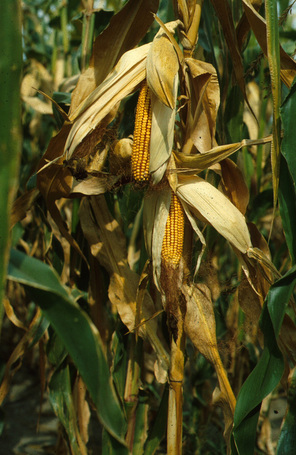 Pursuit to understand why and how corn stalk rot develops was certainly undertaken by many researchers before my attempts. There were research publications done before corn hybrids were commercialized, when farmers mostly saved seed from the variety in the field. But these plants were not genetically uniform. Superior yields of hybrids and eventually the realization that highest yields came from single cross hybrids in the mid to late 1960’s, it became clear that even when each plant in the field was genetically identical, stalk rot could not be explained by genetics alone. Pappelis at Southern Illinois University showed that the pith cells senesced after pollination and at rates faster in genotypes that tended to get more stalk rot. Mortimore’s studies in Canada indicated that stalk rot is always preceded by root rot. Ullstrup, at Purdue, did studies showing that root tissues start senescing soon after pollination. Foley, at Iowa State, published that when the pith tissue pulls away from the stalk rind as when a plant wilts, the structural strength is reduced by 1/3 by simply changing from a rod to a tube. Other studies showed that one could increase occurrence of stalk rot by artificially shading plants after pollination. Corn borers were associated with stalk rot occurrence. Leaf diseases like Northern Leaf Blight were seen to increase stalk rot. Corn breeders were (and still are) frustrated that some of the highest yielding hybrids tend to be the most vulnerable to stalk rot. Although pathologists usually identified a few fungi, such as Fusarium moniliforme, Gibberella zeae, Diplodia maydis, and Colletotrichum graminicola as frequently found in the dead stalks, actually many other fungi were also present. But if root destruction occurred first, were these only quick invaders of tissue that was on its way to death? And then there was the observation made by many that one often could see, in a corn row along the edge of a field, that the plant that wilted first had two ears, instead of the one ear on most of the other live ones in the same field. Why that plant? Comments are closed.
|
About Corn JournalThe purpose of this blog is to share perspectives of the biology of corn, its seed and diseases in a mix of technical and not so technical terms with all who are interested in this major crop. With more technical references to any of the topics easily available on the web with a search of key words, the blog will rarely cite references but will attempt to be accurate. Comments are welcome but will be screened before publishing. Comments and questions directed to the author by emails are encouraged.
Archives
December 2021
Categories
|
 RSS Feed
RSS Feed